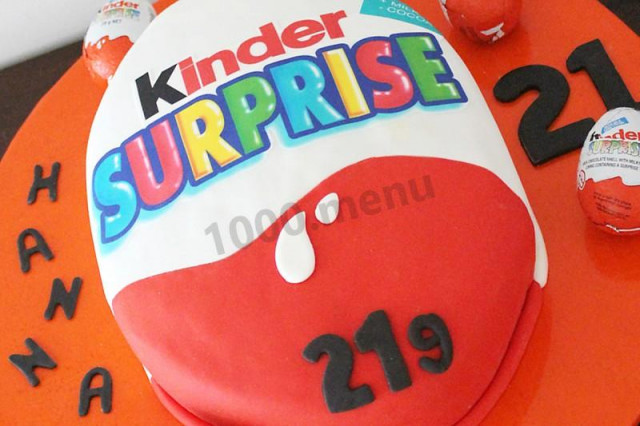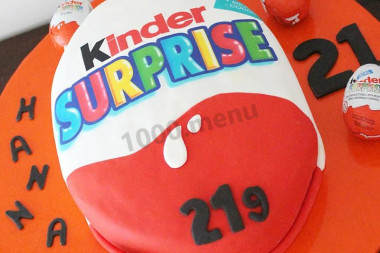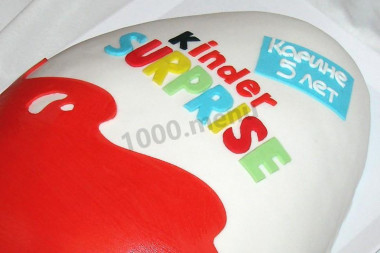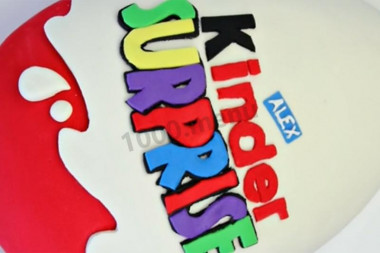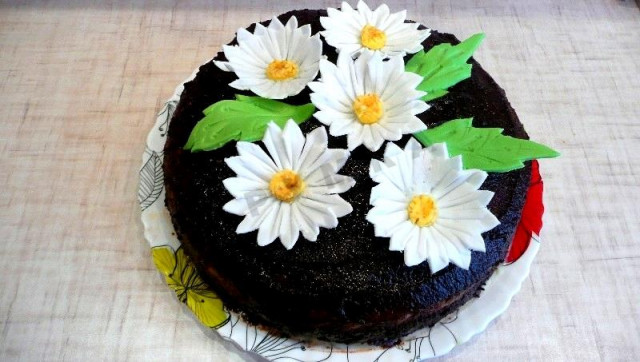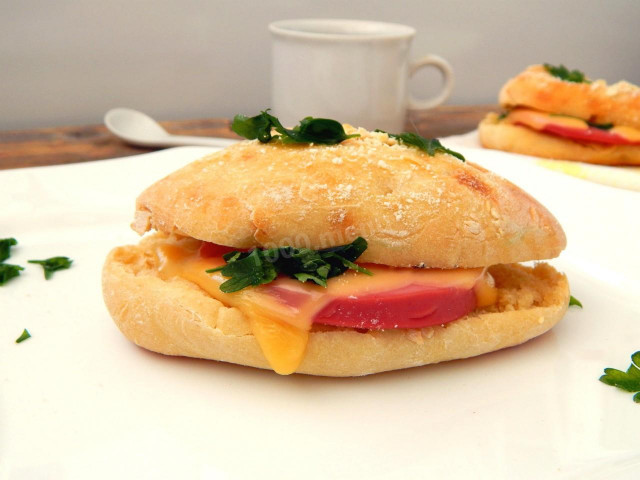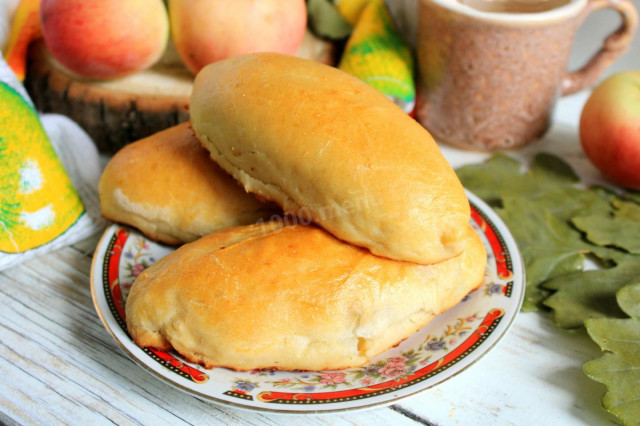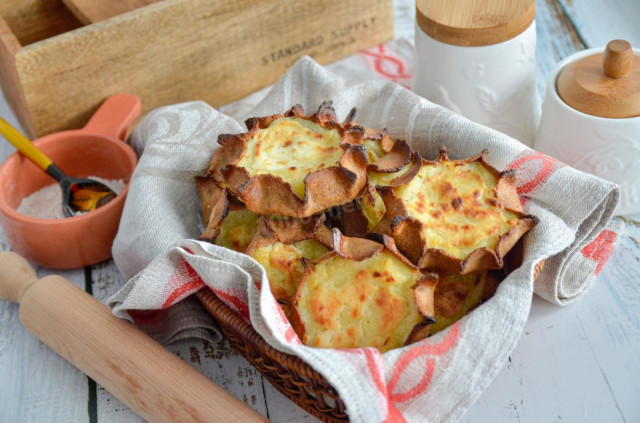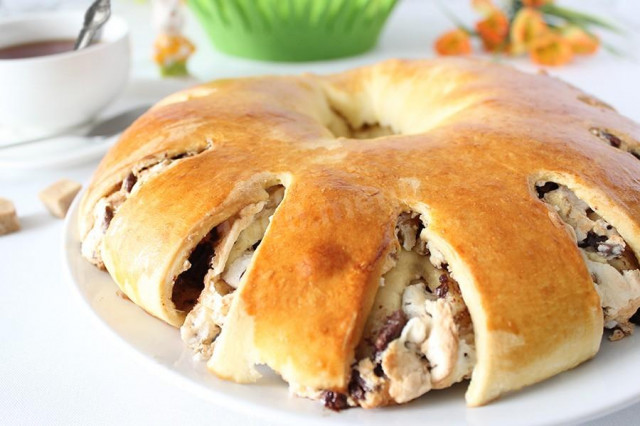Composition / ingredients
Step-by-step cooking
Step 1:
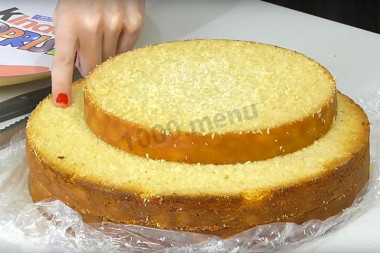
For the sponge cake, beat the butter, add sugar, vanilla and eggs one at a time, without ceasing to beat. Add the flour sifted with baking powder and salt in portions, alternating with milk and sour cream. Mix everything thoroughly every time. Bake a large cake with a diameter of 28 cm and a thickness of about 6 cm (180gr. -1 hour) and a small cake with a diameter of 20 cm and a height of 2.5-3 cm (180 gr.-30 min.) The dough is just enough for this volume. Cut off the tops, divide the large cake into two.
Step 2:

For the ganache, put the chocolate in a bowl (if a tile, break it), and heat the cream to a low boil. Pour the cream over the chocolate and leave for 1-2 minutes. Stir until smooth, put on a steam bath and cook, stirring constantly, to 47 degrees. Cool the ganache and pour it into an airtight container. Soak overnight before use.
Step 3:

Cakes are also good to withstand a day before assembling the cake. The biscuit will get stronger, and it will be easier for you to assemble the cake. Cut out the foil cardboard according to the shape of your cake (30 cm on the long side, 23 cm on the short side). Put it on top of two large cakes and cut off the excess.
Step 4:
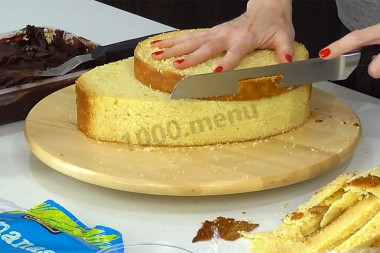
Put a small cake on the cakes and cut it to size.
Step 5:
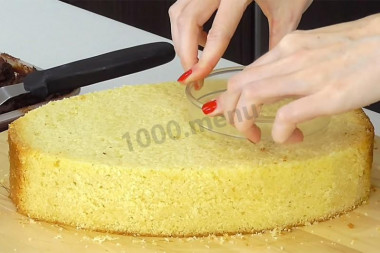
In the wide part of the large cakes, make a hole for a surprise. Its diameter should be at least 3 cm smaller than the small cake.
Step 6:
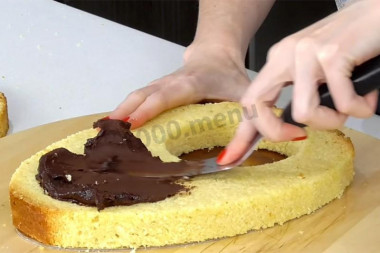
Smear the bottom cake with ganache.
Step 7:
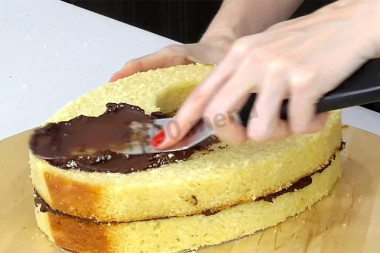
Put the top layer, smear it with the same layer.
Step 8:
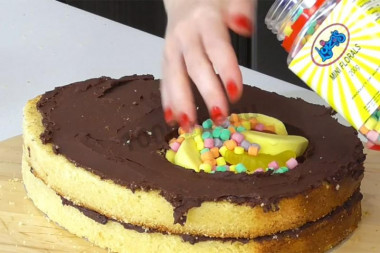
Fill the surprise hole with candy. It can be both kinders and marmalade - everything that the recipient of the cake likes the most. Cover the secret compartment with a small cake, press all the cakes well together.
Step 9:
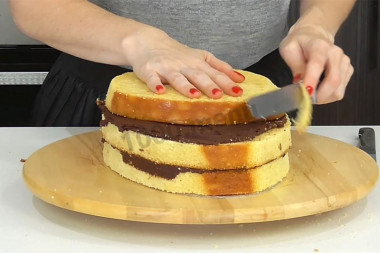
With a large knife, start leveling the cake and bringing it closer to the egg shape.
Step 10:
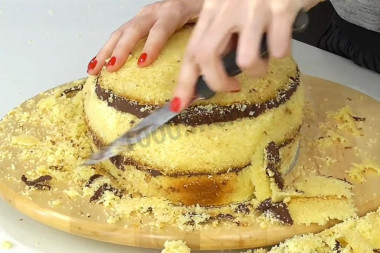
Continue with a small sharp knife, as if smoothing out corners and irregularities.
Step 11:
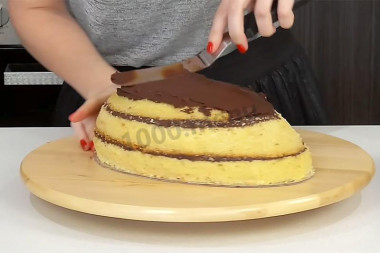
Cover the cake with ganache.
Step 12:
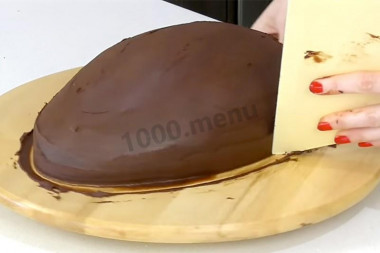
Level the surface with a silicone spatula. Put the cake in the freezer for 15 minutes so that the surface freezes.
Step 13:
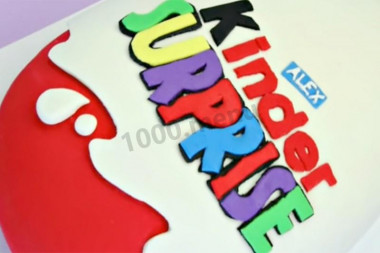
To cover, you need 400 g of red mastic, 500 g of white and 100 g of different colors little by little.
Step 14:
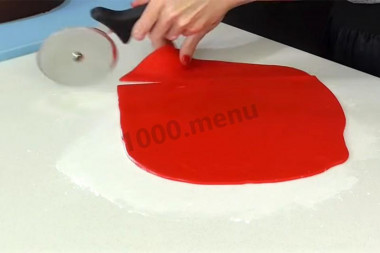
Roll out the thinly red mastic. Make one edge smooth. Cover the bottom of the cake with sugar syrup so that the mastic holds well on the cake.
Step 15:
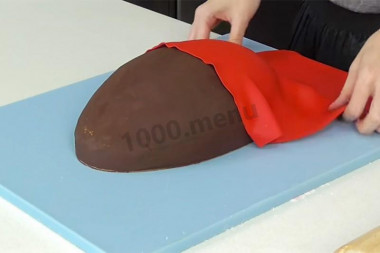
Cover the bottom of the egg-cake, smooth, trim the edge and polish the mastic with an iron. Smooth out a little, making it thinner, the edge that is on top.
Step 16:
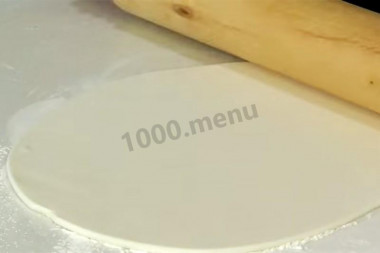
Roll out the white mastic.
Step 17:

Cover the top and center of the cake with white mastic, going to the red layer and not forgetting to cover the top of the cake with syrup.
Step 18:
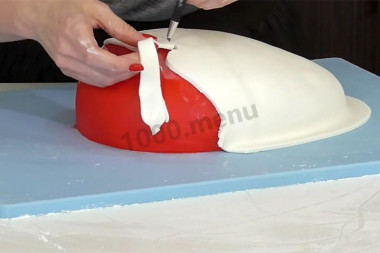
Trim the wave from below, smooth it out.
Step 19:
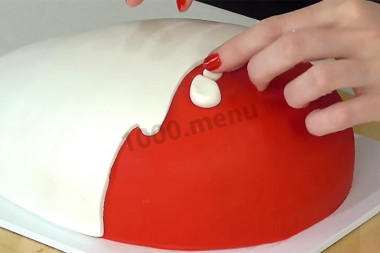
Make a spray of white mastic. Attach drops and waves with syrup.
Step 20:

Cut out templates from paper blanks, and then cut out letters and a rectangular name tag from multi-colored mastic.
Step 21:
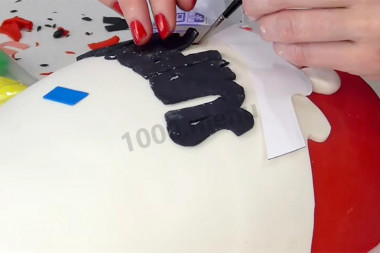
Put letters on the syrup. If the letters are layered, roll out the mastic thinner.
Step 22:
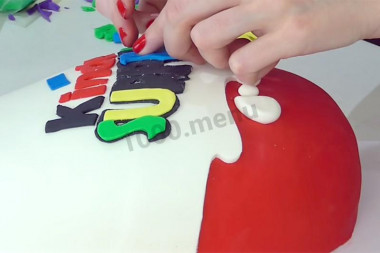
Smear each layer with syrup. To make it convenient to work with small details, sprinkle them with powder or starch (they can then be easily removed with a dry powder brush).
Step 23:
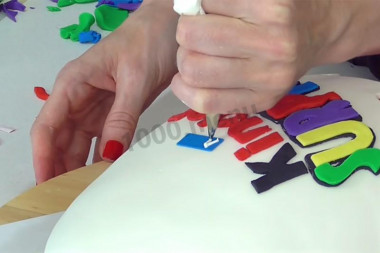
Write a name on the tag (or make a bigger tag and wish something good). Mastic cakes are stored in refrigerators with dry freezing. In refrigerators of the old type, the mastic is covered with condensate.
Have fun!
PS Instead of mastic, you can use butter cream and cornetic. It also turns out very tasty and beautiful.
Caloric content of the products possible in the composition of the dish
- Whole cow's milk - 68 kcal/100g
- Milk 3.5% fat content - 64 kcal/100g
- Milk 3.2% fat content - 60 kcal/100g
- Milk 1.5% fat content - 47 kcal/100g
- Concentrated milk 7.5% fat content - 140 kcal/100g
- Milk 2.5% fat content - 54 kcal/100g
- Buttermilk - 36 kcal/100g
- Cream of 20% fat content - 300 kcal/100g
- Cream of 10% fat content - 120 kcal/100g
- Cream - 300 kcal/100g
- Sour cream with 30% fat content - 340 kcal/100g
- Sour cream of 25% fat content - 284 kcal/100g
- Sour cream with 20 % fat content - 210 kcal/100g
- Sour cream of 10 % fat content - 115 kcal/100g
- Sour cream - 210 kcal/100g
- Granulated sugar - 398 kcal/100g
- Sugar - 398 kcal/100g
- Starch - 320 kcal/100g
- Butter 82% - 734 kcal/100g
- Amateur unsalted butter - 709 kcal/100g
- Unsalted peasant butter - 661 kcal/100g
- Peasant salted butter - 652 kcal/100g
- Melted butter - 869 kcal/100g
- Salt - 0 kcal/100g
- Wheat flour - 325 kcal/100g
- Baking powder dough - 79 kcal/100g
- Chicken egg - 80 kcal/100g
- Sugar syrup - 300 kcal/100g
- Candy - 397 kcal/100g
- Mastic - 393 kcal/100g
- Vanilla Extract - 321 kcal/100g
- Belgian chocolate - 539 kcal/100g

